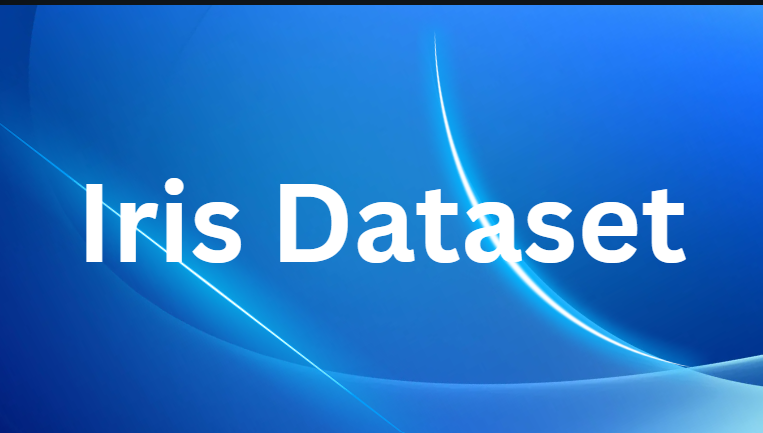The Iris dataset is one of the most famous and simple datasets in the field of data science and machine learning. It is often used by students, researchers, and professionals to practice data analysis and test different machine learning algorithms. In this article, we will explore everything about the Iris dataset in easy English — including its background, structure, and how to use it effectively.
1. What is the Iris Dataset?
The Iris dataset is a small collection of data that contains information about different types of iris flowers. It was first introduced by Ronald A. Fisher, a British statistician, in 1936. The main goal of this dataset is to help identify and classify flowers into different species based on their features.
This dataset is often called the “Hello World of Machine Learning” because it’s simple, clean, and perfect for beginners to start learning data analysis and classification techniques.
2. Why is the Iris Dataset So Popular?
The Iris dataset is popular for several reasons:
- Easy to Understand: It has only a few features and classes, which makes it simple to study.
- Small Size: It contains only 150 rows, so it’s easy to handle and process.
- Balanced Data: Each flower type has an equal number of samples (50 each).
- Ideal for Learning: It helps beginners learn how to work with data, visualize it, and build basic machine learning models.
Because of these qualities, almost every data science tutorial or course uses the Iris dataset as an example.
3. Structure of the Iris Dataset
The dataset includes 150 rows and 5 columns. Each row represents a flower, and each column contains information about its physical features.
Here’s what the columns represent:
Feature NameDescriptionSepal LengthThe length of the sepal (in centimeters)Sepal WidthThe width of the sepal (in centimeters)Petal LengthThe length of the petal (in centimeters)Petal WidthThe width of the petal (in centimeters)SpeciesThe type of iris flower (Setosa, Versicolor, or Virginica)
These features help a machine learning model learn the differences between the three flower species.
4. The Three Types of Iris Flowers
The dataset includes three species of iris flowers:
- Iris Setosa – Has smaller petals and sepals.
- Iris Versicolor – Has medium-sized petals.
- Iris Virginica – Has the largest petals and sepals.
By studying their measurements, data scientists can build models that predict which type of flower a new sample belongs to.
5. How to Load the Iris Dataset
The Iris dataset is included in many popular libraries, like Scikit-learn in Python. You can easily load it using just a few lines of code:
from sklearn.datasets import load_iris iris = load_iris() print(iris.data) # Features print(iris.target) # Labels
You can also download it as a CSV file from sources like Kaggle or the UCI Machine Learning Repository.
6. Using the Iris Dataset for Analysis
You can perform several types of analyses using this dataset, such as:
- Data Visualization: You can use charts like scatter plots to compare features.
- Statistical Analysis: You can calculate averages, ranges, and correlations.
- Machine Learning Models: You can train models like Decision Trees, K-Nearest Neighbors (KNN), or Logistic Regression.
Example code for training a simple model:
from sklearn.model_selection import train_test_split from sklearn.tree import DecisionTreeClassifier from sklearn.metrics import accuracy_score X_train, X_test, y_train, y_test = train_test_split(iris.data, iris.target, test_size=0.3, random_state=1) model = DecisionTreeClassifier() model.fit(X_train, y_train) predictions = model.predict(X_test) print(“Accuracy:”, accuracy_score(y_test, predictions))
This model can easily achieve over 90% accuracy, proving how clean and well-structured the dataset is.
7. Data Visualization Example
Visualizing data helps in understanding relationships between features. Using libraries like matplotlib or seaborn, you can create simple plots:
import seaborn as sns import pandas as pd df = pd.DataFrame(data=iris.data, columns=iris.feature_names) df[‘species’] = iris.target_names[iris.target] sns.pairplot(df, hue=”species”)
This shows how the flower types differ based on their petal and sepal dimensions.
8. Benefits of Studying the Iris Dataset
Here are the main benefits of working with the Iris dataset:
- Helps understand data preprocessing and cleaning
- Teaches data visualization and feature comparison
- Great for learning classification algorithms
- Useful for testing new machine learning tools and techniques
Because of these benefits, it’s often the first dataset used in both academic and professional data science training.
9. Limitations of the Iris Dataset
Even though it’s popular, the Iris dataset has a few limitations:
- Too Simple: It’s not suitable for complex or deep learning models.
- Small Size: Only 150 samples may not represent real-world problems.
- Low Variety: Only three classes make it less challenging for advanced learners.
Despite these limits, it remains one of the best learning tools for beginners.
10. Real-World Applications of the Iris Dataset
While the dataset itself is small, the techniques you learn from it can be applied to many real-world problems, such as
- Plant Classification
- Medical Diagnosis
- Customer Segmentation
- Pattern Recognition
It builds a strong foundation for more advanced datasets and projects.
FAQs
Q1. Who created the Iris dataset?
A: The dataset was created by Ronald A. Fisher in 1936 for his paper on discriminant analysis.
Q2. How many classes are in the Iris dataset?
A: There are three classes—Setosa, Versicolor, and Virginica.
Q3. How many samples are in the Iris dataset?
A: There are 150 samples in total, with 50 samples per class.
Q4. Can beginners use the Iris dataset?
A: Yes, it’s perfect for beginners learning data science or machine learning.
Q5. What programming language is best for working with it?
A: Python is the most commonly used language because of its strong data science libraries.
Conclusion
The Iris dataset is a timeless classic in the world of data science. Its simplicity, balance, and structure make it the best starting point for anyone learning machine learning, data visualization, or statistical analysis. Though small, it provides powerful lessons that apply to real-world projects—making it a perfect guide for all data enthusiasts.

